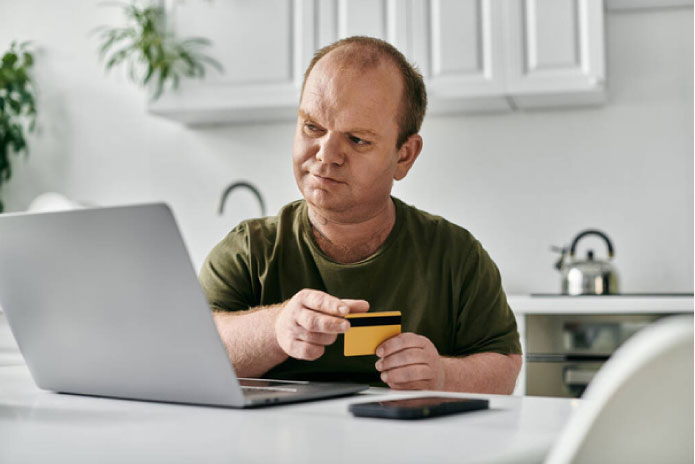Christmas 2024 reflects shifts in Brazilian consumer behavior and priorities. According to new research by Hibou, a company specializing in consumer monitoring and insights, conducted with over 1200 Brazilians, only... 51% respondents plan to buy gifts. This year, an indicator of the economic challenges faced by many families. Simultaneously, the survey revealed that... 14% of Brazilians will spend the date alone.an increase of 3 p.p. This is incomplete. "3 p.p." needs context to be translated. "p.p." likely stands for something like "per person," "per page," or "point percentage," but without knowing the full sentence or document, the best translation can't be provided. Regarding 2023. Despite this, 40% still see Christmas as an opportunity to renew hope for the future..
We are observing a movement combining adaptation and resilience. The increase in the number of people spending Christmas alone and the decreased intention to gift-giving reflect both financial constraints and emotional shifts. Nevertheless, Brazilians maintain the essence of Christmas, as a time of hope and meaning," analyzes Ligia Mello, CSO of Hibou and research coordinator.
Cuts to the present and changes to the lists
Intending to gift a minor, the budget stands out as a decisive factor: Of the 51% who intend to buy gifts, Please provide the full Portuguese text. "28% planejam gastar entre R$250 e R$500" is gibberish and needs the full context to be translated. I need the words surrounding these numbers to understand their meaning. Some 20% units will invest between R$150 and R$250, while others intend to invest between R$500 and R$1000.A small portion of 12% is only intending to spend more than R$1000.
Even for those giving gifts, the profile of the recipients has changed. Children gained priority, rising by 4 percentage points (54%)while the parents (47%) and spouses (48%) experienced significant drops of 15 percentage points and 7 p.p. This is incomplete. "7 p.p." needs context. It could be shorthand for several things, such as: * **7 percentage points:** A change in a percentage. * **7 points per pound:** A unit of measurement in a technical context. * **7 points per period:** Similar to above, another technical context. * **7 pages per part:** If part of a book or document description. * **7 (some other abbreviation):** Could mean 7 parts per million, etc. Please provide the context. Respectively. The choice reflects a greater focus on the next generation and those closest within the family nucleus.
Among the 31% who will not buy gifts this yearThe main reasons are lack of money (32%), debt (14%), the economy (18%), and not feeling in a festive mood (12%).
Health falls from the top: clothes and perfumes dominate desires
If health was the most desired gift for Brazilians in 2023, in 2024, the desire for tangible items returned with force. Clothing (22%) and perfumes (10%) Top the list of most anticipated gifts, followed by Electronics (11%). Travels are left with 7% of desire.
Health that was a desire for 32% in 2023 fell to 9%, indicating a shift in emotional priorities towards practical and material needs.
Christmas Shopping Ranking
For the 51% For gifts, utility items are gaining significant traction on shopping lists. 64% They will invest in clothing and accessories. 35% in perfumes and cosmetics; 34% in toys 22% shoes and 13% books
Purchases also show consolidated trends. 56% users will opt for online shopping. while acquisitions in shopping malls (49%) fell 9 p.p. (This is incomplete. "9 p.p." needs context to translate accurately. It could be 9 percentage points, 9 points per pound, or something else entirely.) Reinforcing trust in e-commerce and delivery logistics. At the same time, 43% They still prefer street stores.
Loneliness and hope coexist.
The growth in the number of people who will spend Christmas alone, which has reached 14%reflects a complex reality, with an increase of 3 p.p. This is incomplete. "3 p.p." needs context to be translated. "p.p." likely stands for something like "per person," "per page," or "point percentage," but without knowing the full sentence or document, the best translation can't be provided. Compared to last year. There was also a strengthening sense of hope: 40% of Brazilians see Christmas as a time of renewal. While 47% see the date as an opportunity to gather family.
This scenario reveals a duality: while some face introspection and solitude, others find in the date a chance for reconnection and optimism.
Christmas traditions withstand change.
On the table, the classics remain the stars. Peru (18%), Chester (11%), and Ham (9%) They remain among the most cherished dishes. Family Christmas Eve dinner continues as one of the hallmarks of Brazilian Christmas, being the choice of 27% of those interviewed.
Consumption with the foot on the brake
Consumer behavior reflects the search for financial equilibrium. 44% will finance Christmas expenses with the month's salary. Already, 2 out of every 10 Brazilians will use the second installment of the 13th salary, while another 10% will use the first installment of the 13th salary, while 7% will have additional income streams or side hustles. For many, Black Friday was a strategic opportunity, with 33% purchased gifts during the promotions.
Research reveals how much Christmas adapts to social and economic conditions. Even amidst restrictions and shifts in behavior, Brazilians still value the date as a moment of renewal and connection. It's a reflection of our capacity for adaptation and the emotional value Christmas holds," concludes Ligia Mello.


